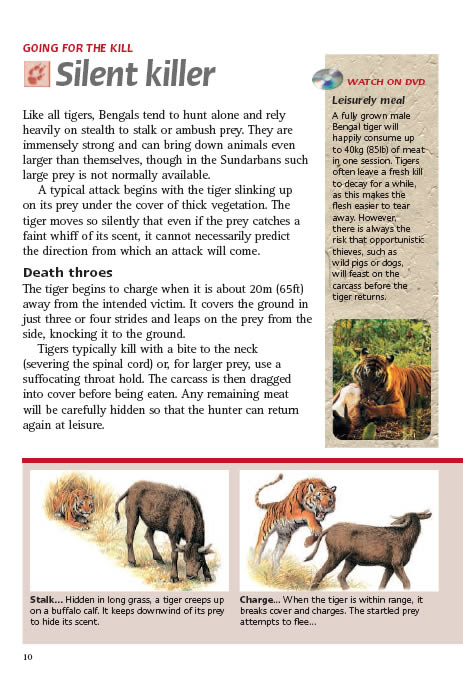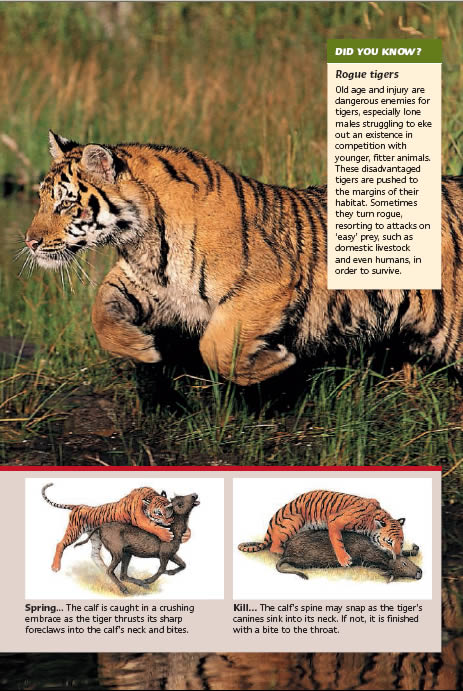GOING FOR THE KILL
Silent killer
Like all tigers, Bengals tend to hunt alone and rely heavily on stealth to stalk or ambush prey. They are immensely strong and can bring down animals even larger than themselves, though in the Sundarbans such large prey is not normally available. A typical attack begins with the tiger slinking up on its prey under the cover of thick vegetation. The tiger moves so silently that even if the prey catches a faint whiff of its scent, it cannot necessarily predict the direction from which an attack will come.
Death throes
The tiger begins to charge when it is about 20m (65ft) away from the intended victim. It covers the ground in just three or four strides and leaps on the prey from the side, knocking it to the ground. Tigers typically kill with a bite to the neck (severing the spinal cord) or, for larger prey, use a suffocating throat hold. The carcass is then dragged into cover before being eaten. Any remaining meat will be carefully hidden so that the hunter can return again at leisure.

Stalk... Hidden in long grass, a tiger creeps up on a buffalo calf. It keeps downwind of its prey to hide its scent.
Charge... When the tiger is within range, it breaks cover and charges. The startled prey attempts to flee ...
Leisurely meal
A fully grown male Bengal tiger will happily consume up to 40kg (85lb) of meatin one session. Tigers often leave a fresh kill to decay for a while, as this makes the flesh easier to tear away. However, there is always the risk that opportunistic thieves, such as wild pigs or dogs, will feast on thecarcass before the tiger returns.

Spring... The calf is caught in a crushing embrace as the tiger thrusts its sharp foreclaws into the calf's neck and bites.
Kill... The calf's spine may snap as the tiger's canines sink into its neck. If not, it is finished with a bite to the throat.
DID YOU KNOW?
Rogue tigers
Old age and injury are dangerous enemies for tigers, especially lone males struggling to eke out an existence in competition with younger, fitter animals. These disadvantaged tigers are pushed to the margins of their habitat. Sometimes they turn rogue, resorting to attacks on `easy' prey, such as domestic livestock and even humans, in order to survive.


